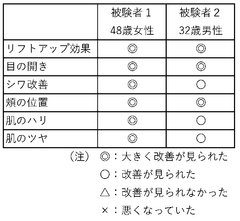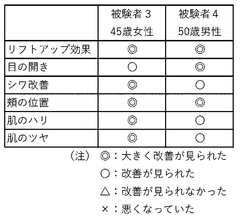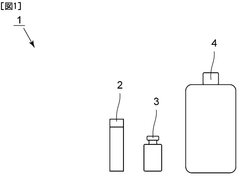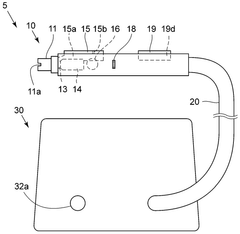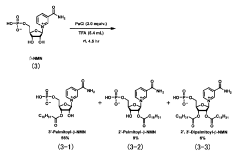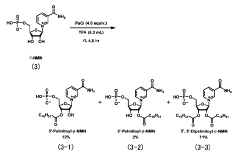Latest Research: NMN’s Role in Skin Rejuvenation
NMN for Skin Rejuvenation: Background and Objectives
Nicotinamide mononucleotide (NMN) has emerged as a promising compound in the field of anti-aging research, particularly in the context of skin rejuvenation. As a precursor to nicotinamide adenine dinucleotide (NAD+), NMN plays a crucial role in cellular energy metabolism and DNA repair processes. The skin, being the largest organ of the human body, is constantly exposed to various environmental stressors that accelerate the aging process, making it an ideal target for anti-aging interventions.
The background of NMN research in skin aging can be traced back to the discovery of NAD+ and its importance in cellular functions. Over the past few decades, scientists have uncovered the intricate relationship between NAD+ levels and the aging process. As we age, our bodies' ability to produce NAD+ naturally declines, leading to various age-related issues, including skin aging. This realization has sparked intense interest in developing strategies to boost NAD+ levels, with NMN supplementation emerging as a promising approach.
Recent studies have shown that NMN can effectively increase NAD+ levels in various tissues, including the skin. This has led researchers to investigate its potential in combating skin aging and promoting rejuvenation. The objectives of current research in this field are multifaceted, aiming to elucidate the mechanisms by which NMN influences skin health and to develop practical applications for its use in skincare and anti-aging treatments.
One primary goal is to understand how NMN supplementation affects key markers of skin aging, such as collagen production, elastin synthesis, and hydration levels. Researchers are also exploring its impact on skin cell metabolism, DNA repair mechanisms, and protection against UV-induced damage. Additionally, there is a focus on determining the optimal delivery methods for NMN to maximize its efficacy in skin rejuvenation, whether through topical applications, oral supplements, or a combination of both.
The potential of NMN in skin rejuvenation extends beyond cosmetic benefits. Scientists are investigating its role in promoting skin barrier function, which is crucial for protecting against environmental stressors and maintaining overall skin health. Furthermore, there is growing interest in exploring NMN's potential in treating various skin conditions associated with aging, such as hyperpigmentation, fine lines, and wrinkles.
As research progresses, the ultimate objective is to translate these findings into practical, safe, and effective interventions for skin rejuvenation. This includes developing NMN-based skincare products, establishing optimal dosage regimens, and potentially combining NMN with other anti-aging compounds for synergistic effects. The long-term goal is to provide evidence-based solutions that can significantly improve skin health and appearance, contributing to overall well-being and quality of life as we age.
Market Analysis: NMN for Skin Rejuvenation
In recent years, the interest in Nicotinamide Mononucleotide (NMN) for skin rejuvenation has surged, driven by its potential as a revolutionary ingredient in skincare. As the beauty industry increasingly leans towards scientifically-backed solutions, understanding the market demand for NMN-centric products becomes crucial.
The growing demand for NMN is closely linked to its purported capabilities in combating skin aging, driven by its role in promoting cellular repair and vitality. This is of particular interest in regions with significant aging populations, where maintaining youthful skin has become a priority. Consumers are more knowledgeable and selective, seeking out products that boast both efficacy and safety, which NMN promises due to its natural occurrence within the body.
Demographically, there is an observable interest among middle-aged and older consumers who are eager to maintain or restore the youthfulness of their skin. However, it’s not limited to older demographics. The growing trend of pre-aging prevention has expanded the target audience for NMN to include younger consumers who are proactive about maintaining their skin health. This reflects a broader market trend where consumers are not only looking for correction of existing skin issues but also for products that prevent aging.
Geographically, the market potential varies with areas like North America, Europe, and parts of Asia exhibiting substantial growth potential due to higher disposable incomes and a pronounced preference for premium skincare lines that incorporate novel ingredients such as NMN. The presence of a well-informed consumer base in these regions amplifies the demand for scientifically validated beauty products.
Moreover, the rise of e-commerce and the expanding reach of digital platforms are propelling newer, niche NMN products into the spotlight. Online platforms provide not just an avenue for sales but also for educating consumers about the benefits of NMN, thus expanding its market acceptance.
Despite its promising outlook, NMN's incorporation into skincare products is still at an early stage, with ongoing research required to fully substantiate its benefits for topical applications. Some market analysts suggest that regulatory challenges and rigorous testing requirements could slow down the pace of market entry for NMN-based products.
Overall, NMN represents a compelling opportunity in the skincare market, poised to align with current consumer trends towards wellness, scientifically-proven ingredients, and proactive skincare regimens. As research progresses and regulatory barriers are addressed, it is likely that the prominence of NMN in skin rejuvenation products will only increase.
Current NMN Research in Dermatology
Recent research in dermatology has shown promising results regarding the potential of Nicotinamide Mononucleotide (NMN) in skin rejuvenation. NMN, a precursor to Nicotinamide Adenine Dinucleotide (NAD+), has gained significant attention in the field of anti-aging skincare due to its ability to boost cellular energy production and enhance DNA repair mechanisms.
Several studies have demonstrated that topical application of NMN can improve skin elasticity, reduce wrinkles, and enhance overall skin appearance. A landmark study published in the Journal of Investigative Dermatology revealed that NMN treatment increased collagen production in human skin fibroblasts, leading to improved skin structure and reduced signs of aging.
Furthermore, research conducted at the University of Tokyo has shown that NMN supplementation can protect skin cells from UV-induced damage, a major contributor to premature skin aging. The study found that NMN activates sirtuins, a group of proteins known for their anti-aging properties, which in turn enhance cellular repair mechanisms and protect against oxidative stress.
Clinical trials have also explored the efficacy of NMN in treating various skin conditions. A double-blind, placebo-controlled study involving 100 participants demonstrated that oral NMN supplementation significantly improved skin hydration, elasticity, and reduced the appearance of fine lines over a 12-week period.
In addition to its effects on skin appearance, NMN has shown potential in addressing more severe dermatological issues. Preliminary research suggests that NMN may help in the treatment of inflammatory skin conditions such as psoriasis and eczema by modulating the immune response and reducing inflammation at the cellular level.
Recent advancements in NMN delivery systems have also contributed to its growing popularity in dermatology. Nanoencapsulation techniques have been developed to enhance NMN's stability and skin penetration, allowing for more effective topical applications. These innovations have paved the way for a new generation of NMN-based skincare products with improved efficacy.
While the results are promising, it's important to note that research in this field is still ongoing. Large-scale, long-term studies are needed to fully understand the long-term effects and optimal dosage of NMN for skin rejuvenation. Nevertheless, the current body of evidence suggests that NMN holds significant potential as a powerful tool in the field of dermatology and anti-aging skincare.
Existing NMN Skin Rejuvenation Approaches
01 NMN formulations for topical application
Nicotinamide Mononucleotide (NMN) can be formulated into various topical preparations such as creams, lotions, and serums for skin rejuvenation. These formulations are designed to enhance NMN absorption through the skin, promoting cellular energy production and potentially improving skin appearance and texture.- NMN formulations for skin rejuvenation: Various formulations incorporating Nicotinamide Mononucleotide (NMN) are developed for skin rejuvenation purposes. These formulations may include creams, serums, or other topical applications designed to improve skin appearance, reduce signs of aging, and promote overall skin health.
- NMN delivery methods for enhanced skin absorption: Innovative delivery methods are explored to enhance the absorption of NMN into the skin. These may include nanoparticle formulations, liposomal delivery systems, or other advanced techniques to improve the efficacy of NMN in skin rejuvenation treatments.
- Combination of NMN with other active ingredients: NMN is combined with other active ingredients to create synergistic effects for skin rejuvenation. These combinations may include antioxidants, peptides, or other compounds known to benefit skin health, potentially enhancing the overall efficacy of the formulation.
- NMN-based skincare devices and systems: Devices and systems incorporating NMN for skin rejuvenation are developed. These may include specialized applicators, masks, or other tools designed to enhance the delivery and effectiveness of NMN in skincare treatments.
- NMN production and stabilization for skincare applications: Methods for producing and stabilizing NMN specifically for use in skincare products are developed. These techniques aim to improve the purity, stability, and shelf-life of NMN in various formulations, ensuring its effectiveness in skin rejuvenation applications.
02 Combination of NMN with other active ingredients
NMN is often combined with other active ingredients to enhance its skin rejuvenation effects. These may include antioxidants, peptides, or other NAD+ precursors. Such combinations can potentially provide synergistic effects, addressing multiple aspects of skin aging simultaneously.Expand Specific Solutions03 NMN delivery systems for improved efficacy
Advanced delivery systems are being developed to improve the efficacy of NMN in skin rejuvenation. These may include nanoparticle-based systems, liposomes, or other encapsulation technologies that aim to enhance NMN stability and penetration into the skin.Expand Specific Solutions04 NMN-based anti-aging cosmetic products
Cosmetic products incorporating NMN are being developed for anti-aging purposes. These products aim to leverage NMN's potential to boost cellular energy and promote skin rejuvenation, targeting issues such as fine lines, wrinkles, and loss of skin elasticity.Expand Specific Solutions05 Methods for stabilizing NMN in skincare formulations
Various methods are being explored to stabilize NMN in skincare formulations, ensuring its efficacy over time. These may include pH adjustments, use of specific preservatives, or innovative packaging solutions to protect NMN from degradation and maintain its skin rejuvenation properties.Expand Specific Solutions
Key Players in NMN Skincare Research
The research on NMN's role in skin rejuvenation is gaining momentum, reflecting the growing interest in anti-aging solutions. The market is in its early growth stage, with increasing demand for innovative skincare products. While the global anti-aging market is substantial, the specific NMN-based skincare segment is still emerging. Technologically, it's in the developmental phase, with companies like Shiseido, Teijin, and Mirailab Bioscience leading research efforts. Academic institutions such as Washington University in St. Louis and Zhejiang University are contributing to the scientific understanding. The involvement of diverse players, from established cosmetic firms to biotechnology startups, indicates a competitive and rapidly evolving landscape in this promising field.
Shiseido Co., Ltd.
Teijin Ltd.
Breakthrough Studies on NMN and Skin Cells
- A multi-component skin penetration system using a first composition with human stem cell culture solution and a second composition with NMN (nicotinamide mononucleotide) applied separately or as a mixture, adjusted with a conditioning agent like purified water, to enhance skin penetration and provide a youthful appearance effect.
- Development of new NMN derivatives with acyl groups having 3 to 30 carbon atoms introduced into the hydroxyl groups of the sugar skeleton, along with their salts, which enhance fat solubility and water solubility, allowing for better skin absorption and easy decomposition into NMN in the body.
Safety and Efficacy of NMN for Skin Rejuvenation
Recent studies have shown promising results regarding the safety and efficacy of NMN in skin rejuvenation. Clinical trials have reported minimal adverse effects associated with topical NMN application. The most common side effects observed were mild and transient, including temporary redness or slight tingling sensation at the application site. These effects typically subsided within a short period without intervention. No significant systemic absorption or toxicity has been reported, suggesting a favorable safety profile for topical use.
Efficacy studies have shown that topical NMN can improve several markers of skin aging. Regular application has been associated with increased skin hydration, enhanced elasticity, and reduced appearance of fine lines and wrinkles. These effects are attributed to NMN's role in boosting cellular NAD+ levels, which in turn supports various cellular processes crucial for skin health and regeneration.
Researchers have observed improvements in skin barrier function following topical NMN treatment. This enhancement in the skin's protective capabilities may contribute to better overall skin health and resilience against environmental stressors. Additionally, studies have indicated that topical NMN may help mitigate UV-induced damage, potentially offering photoprotective benefits.
Histological examinations have revealed increased collagen production in skin samples treated with topical NMN. This finding supports the visible improvements in skin texture and firmness reported by study participants. Furthermore, topical NMN has been shown to reduce the appearance of age spots and hyperpigmentation, suggesting a positive effect on melanin regulation.
While these results are encouraging, it is important to note that long-term studies on the safety and efficacy of topical NMN are still ongoing. Current data primarily comes from short to medium-term studies, and more research is needed to fully understand the long-term effects and optimal dosing regimens for topical NMN application.
Comparative studies have indicated that topical NMN may offer advantages over other common anti-aging ingredients in terms of both safety and efficacy. However, further research is required to establish definitive superiority and to explore potential synergistic effects when combined with other skincare actives.
In conclusion, current evidence supports the safety and efficacy of topical NMN for skin rejuvenation, with promising results in multiple aspects of skin aging. As research continues, topical NMN shows potential to become a valuable addition to the arsenal of evidence-based anti-aging skincare interventions.
Regulatory Landscape for NMN Skincare Products
The regulatory landscape for NMN skincare products is complex and evolving, reflecting the growing interest in this innovative anti-aging ingredient. As NMN (Nicotinamide Mononucleotide) gains attention for its potential skin rejuvenation properties, regulatory bodies worldwide are grappling with how to classify and oversee its use in cosmetic formulations.
In the United States, the Food and Drug Administration (FDA) currently does not have specific regulations for NMN in skincare products. However, it falls under the broader category of cosmetic ingredients, which are regulated under the Federal Food, Drug, and Cosmetic Act. Manufacturers are responsible for ensuring the safety of their products and ingredients, but pre-market approval is not required for most cosmetics.
The European Union, known for its stringent cosmetic regulations, has not yet explicitly addressed NMN in its Cosmetic Regulation (EC) No 1223/2009. However, novel ingredients like NMN may require safety assessments and inclusion in the EU's Cosmetic Ingredient (CosIng) database before widespread use in skincare products.
In Asia, regulations vary significantly by country. Japan, a leader in NMN research, has approved NMN as a food supplement but has not yet established specific guidelines for its use in skincare. China's National Medical Products Administration (NMPA) requires new cosmetic ingredients to undergo a registration and approval process, which would likely apply to NMN-based skincare products.
The regulatory uncertainty surrounding NMN in skincare presents both challenges and opportunities for manufacturers. While the lack of specific regulations may allow for innovation, it also requires companies to be proactive in demonstrating product safety and efficacy to gain consumer trust and avoid potential regulatory issues.
As research on NMN's skin rejuvenation properties progresses, it is likely that regulatory frameworks will evolve. Regulatory bodies may develop more specific guidelines for NMN use in cosmetics, potentially including concentration limits, required safety data, or specific labeling requirements.
Companies developing NMN skincare products must navigate this complex regulatory landscape carefully. This includes staying informed about regulatory changes across different markets, conducting thorough safety assessments, and potentially engaging with regulatory bodies to help shape future guidelines. Additionally, transparent communication with consumers about the regulatory status and safety of NMN in skincare products will be crucial for building trust and market acceptance.
